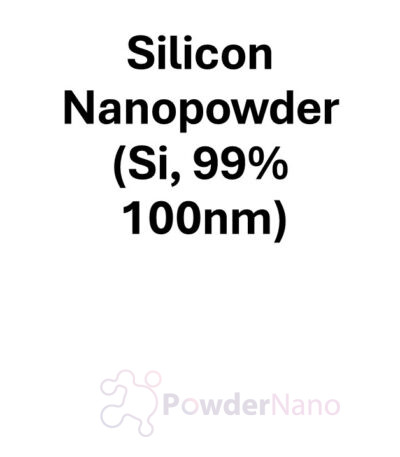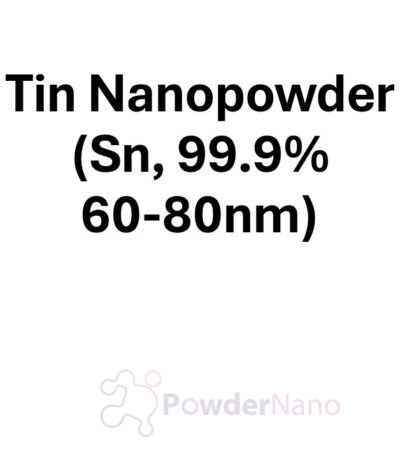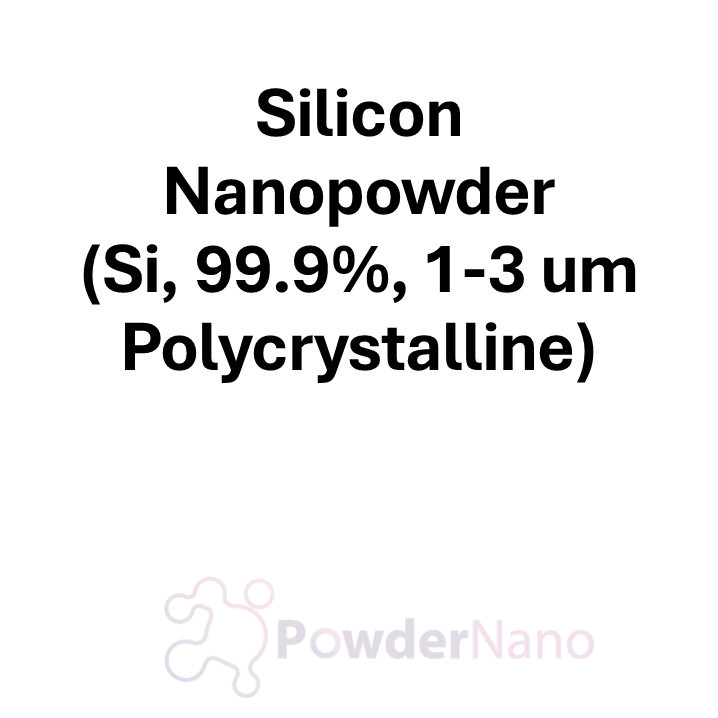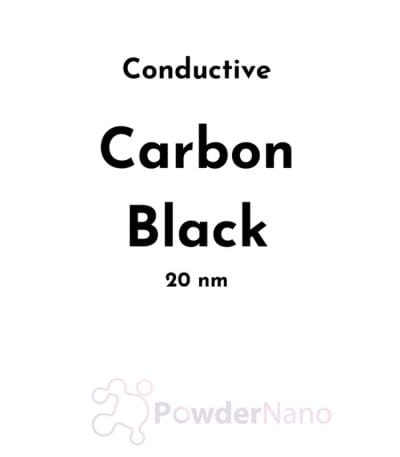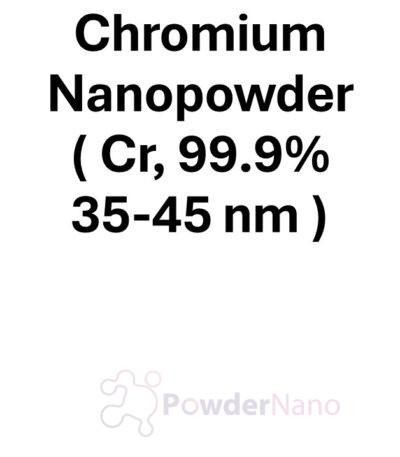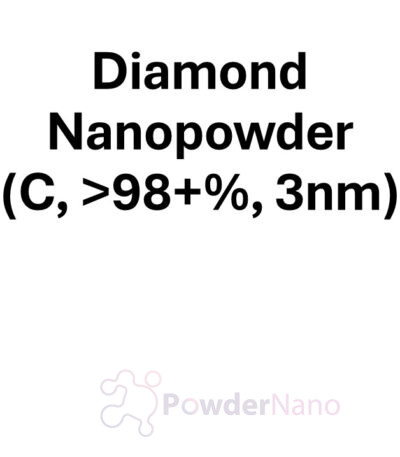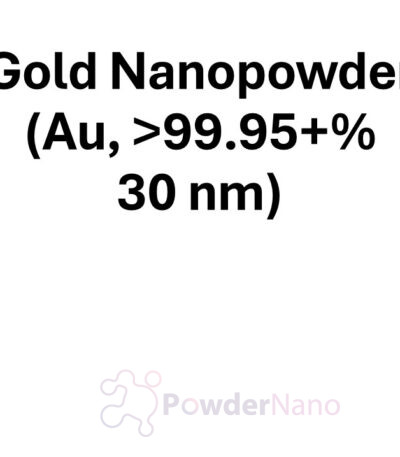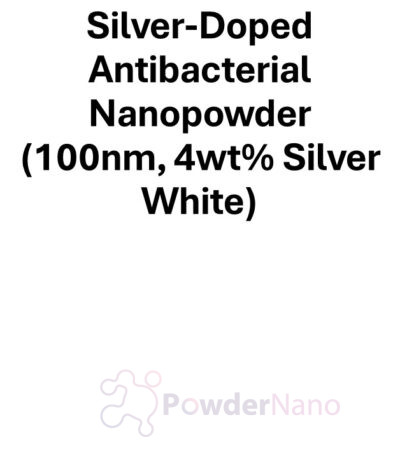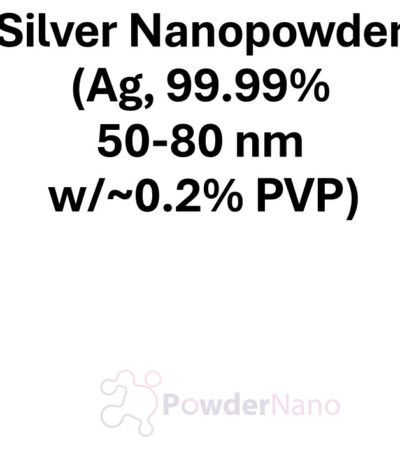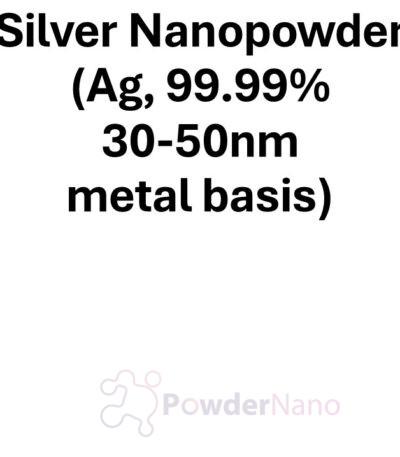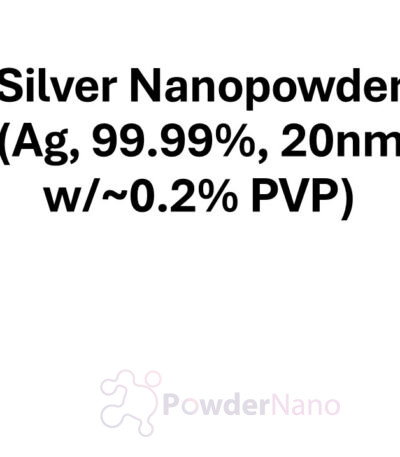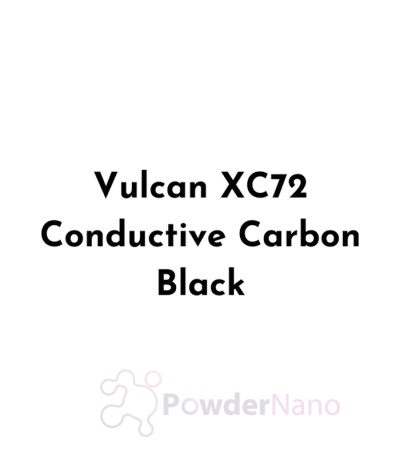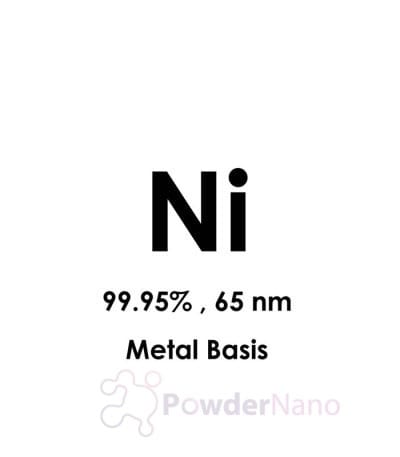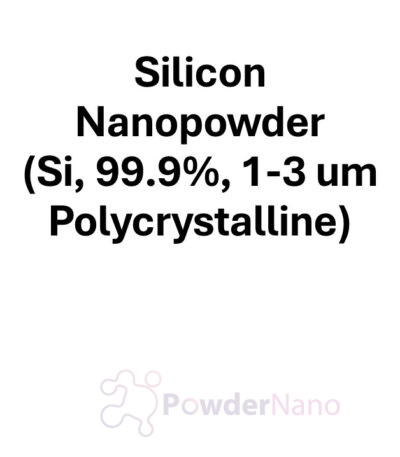Technical Specifications
- Product Name: Silicon Nanopowder
- Chemical Formula: Si
- CAS Number: 7440-21-3
- Structure: Polycrystalline
- Purity
- Grade: 99.9% (metal basis)
- Impurities: ≤0.1% (trace elements, oxides, or non-metallic substances)
- Particle Size
- Range: 1–3 µm (micron scale)
- Particle Size Distribution: Uniformly distributed, confirmed by laser diffraction or microscopy
- Morphology
- Shape: Irregular polycrystalline particles, characteristic of the production process
- Surface Area: Lower than nanoscale silicon powders but higher than bulk silicon
- Crystal Structure
- Type: Polycrystalline
- Crystallinity: Composed of multiple small crystallites with grain boundaries
- Physical and Chemical Properties
- Color: Gray to black powder
- Density: Lower than bulk silicon due to interstitial spaces in polycrystalline form
- Melting Point: ~1,414 °C
- Boiling Point: ~3,265 °C
- Electrical Properties: Semiconductor with a bandgap of ~1.12 eV, applicable in various technologies
- Packaging and Storage
- Standard Packaging: Sealed in airtight containers under inert gas (e.g., argon) or vacuum-sealed
- Storage Conditions: Store in a cool, dry environment, away from moisture and oxidizing agents
- Shelf Life: Stable when properly stored; surface oxidation may develop over time
- Safety and Handling
- Hazards:
- Fine silicon powder can ignite when exposed to strong oxidizers or high heat.
- Dust inhalation may cause respiratory irritation.
- Recommended Protective Measures:
- Use gloves, goggles, and respirators during handling.
- Operate in a controlled or inert environment to minimize risks.
- Hazards:
Applications
- Energy Storage
- Lithium-Ion Battery Anodes: Polycrystalline silicon microparticles are explored for use in battery anodes due to their enhanced capacity compared to traditional graphite.
- Energy Solutions: Suitable for hybrid applications requiring silicon-based energy storage materials.
- Electronics and Semiconductors
- Photovoltaics: Polycrystalline silicon powders are fundamental materials in the manufacturing of solar cells. Their cost-effectiveness makes them ideal for large-scale solar panel production.
- Semiconducting Devices: Used in fabricating transistors, diodes, and other microelectronic components.
- Nanocomposites
- Advanced Materials: Integrated into polymer or ceramic composites to enhance thermal, electrical, and mechanical properties.
- Aerospace and Automotive: Lightweight silicon-based composites provide excellent strength-to-weight ratios.
- Catalysis
- Chemical Catalysts: Polycrystalline silicon is used in chemical industries as a catalyst or catalyst support for specialized reactions.
- Photocatalysis: Employed in solar-driven chemical processes for environmental applications like water purification.
- Coatings and Surface Engineering
- Thermal Coatings: Used in high-temperature coatings for enhanced heat resistance and thermal conductivity.
- Wear-Resistant Coatings: Improves surface durability and mechanical strength in industrial machinery.
- 3D Printing and Additive Manufacturing
- Powder-Based Printing: Silicon micropowders are used in certain 3D printing applications requiring materials with semiconducting or high-temperature properties.
- Optoelectronics
- Infrared Applications: Silicon’s transparency in the IR spectrum makes it suitable for sensors, IR detectors, and specialized optical devices.
- Light-Emitting Devices: Polycrystalline silicon is explored for photonic applications, including quantum-based optical components.
- Research and Development
- Material Science: Used extensively in research to develop next-generation electronic and energy materials.
- Prototype Development: Ideal for testing silicon-based systems in lab environments.
SEO-Optimized Benefits of Silicon Nanopowder (Si, 99.9%, 1-3 µm, Polycrystalline)
- High purity (99.9%) and polycrystalline structure make it an excellent choice for solar energy and electronics.
- Wide applications in lithium-ion batteries, photovoltaics, nanocomposites, and catalysis.
- Cost-effective alternative for industries seeking scalable semiconductor and coating solutions.
- Essential in renewable energy research and optical device manufacturing, making it a versatile material for the future.
